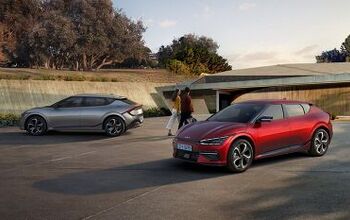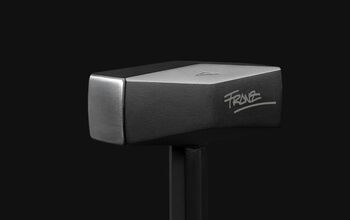Renault Joins AvtoVAZ Bailout

Renault may be playing Russian Roulette, but at least it seems the French automaker is finally playing nicely with Avtovaz and the Kremlin. Maybe the thought of ending up like Mikhail Khodorkovsky spurred Carlos Ghosn into action? Or maybe Ghosn came around when he found out that the Kremlin is going to put $1.7 billion into the ailing Russian car maker. The St. Petersburg Times reports that Renault will invest a mere €300 million in the form of of a technology transfer so that Avtovaz can start building the Logan, Renault’s smash hit in Eastern Europe. It’s like the Fiat-Chrysler deal, only cheaper! Renault will also help Avtovaz develop a new car to replace the Zhiguli (I’d never heard of it, either). Some of this production will happen in Russia’s far east and Renault’s Japanese subsidiary is there to help!
“Moreover, AvtoVAZ, with the help of Renault — in this case I am referring to its Japanese unit Nissan — will launch car production in the Russian Far East,” Russian Prime Minister Vladimir Putin said. Nissan will put forward €60 million of €300 million Renault pledged. Curiously, Autovaz also has goals which it must attain to keep this help flowing in. AvtoVAZ’s market share must not drop below 25%, with 70% of that figure made up of Lada sales. A bailout with clearly defined goals? That’s novel!
In completely unrelated news, Vladimir Putin and French Prime Minister Francois Fillon met up for a 2 day meeting which involved the signing of a number of agreements, which included, Electricité de France buying a 10% stake in the South Stream pipeline. It’s nice to see Franco-Russian relations warming, but as petrolheads this doesn’t bring much to our table. Who’s excited at the prospect of car engineered by Renault, built by Avtovaz and sporting a Lada badge?

More by Cammy Corrigan
Latest Car Reviews
Read moreLatest Product Reviews
Read moreRecent Comments
- Aaron This is literally my junkyard for my 2001 Chevy Tracker, 1998 Volvo S70, and 2002 Toyota Camry. Glad you could visit!
- Lou_BC Let me see. Humans are fallible. They can be very greedy. Politicians sell to the highest bidder. What could go wrong?
- SPPPP Vibrant color 9 times out of 10 for me. There may be a few shapes that look just right in metallic gray, for example. There are a few nices ones out there. And I like VW "White Silver". But I'd usually prefer a deep red or a vibrant metallic green. Or a bright blue.
- 28-Cars-Later Say it ain't so, so reboot #6* isn't going to change anything?[list=1][*]V4-6-8 and High "Tech" 4100.[/*][*]Front wheel drive sooooo modern.[/*][*]NOrthSTARt.[/*][*]Catera wooooo.[/*][*]ATS all the things.[/*][*]We're *are* your daddy's Tesla. [/*][/list=1]
- MaintenanceCosts Can I have the hybrid powertrains and packaging of the RAV4 Hybrid or Prime with the interior materials, design, and build quality of the Mazda?


































Comments
Join the conversation
The Zhiguli is the standard, Fiat 124 based Lada - one of the top 10 selling cars of all time IIRC - so not having heard of it at TTAC???
I don't think they'll ever manage to kill the Zhiguli, they'll probably just update it a bit and keep it in production. The ancient Lada engine is already capable of Euro-4 emissions, so most likely they'll just tweak it to reach Euro-5 and add air bags, ABS & stability control to meet minimum safety requirements, and just keep selling the ancient car. And yes, Zhiguli is that classic boxy Fiat 124-based Lada sold as the 1200/1300/1500/1600/1700 or Riva on export markets.